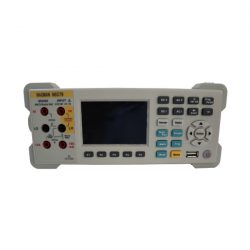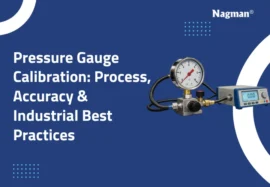Nagman features a large selection of test and measurement equipment that will be utilised for a spread of applications in your field. Why would you like to calibrate temperature or pressure instruments? briefly to get the relevant Test and Measuring Devices. They’re made from a spread of gadgets that are essential in practically every business. The gadgets are tested and evaluated for endurance, performance, and efficiency using measurement tools. These checks must be performed daily on each piece of kit or instrument. In the same way, measuring instruments are often utilized in enterprises to detect everyday practises like voltage, pressure, temperature, resistance, and so forth.
Digital multimeters for checking currents, voltages, resistances, capacitances, and other characteristics are widely accessible on the market and digitally. Electrical devices are frequently tested, installed, and repaired using digital multimeters. With the exponential increase in demand for this testing equipment and, therefore, the consequent increase within the sort of digital multimeters available, it’s understandable if you’re having trouble deciding which one to shop for.
Our clients, on the opposite hand, expressed a big need for more impactful innovation in this area. The long-scale multimeter, featuring greater stability and precision, is required by electrical and metrology research facilities. To satisfy the foremost demanding manufacturing applications of precision components and instruments, users of automated equipment require higher system throughput and high measurement accuracy.
For all metrology purposes, the Nagman team has developed a corresponding multimeter that maintains high ppm precision for almost a year, beating best-in-class legacy systems in both consistency and precision.
Our Top Benchtop Multimeters and Their Features
6½ Digit Precision Digital Multimeter
Features
- 6½ Resolution – equipped with a 3.5” Color monitor
- Resolution Ratio 320*480
- Customizable Display Interface
- Bi-parameter Display Conduct Remote Operation thro’ Interfaces of IEEE 488, RS-232, LAN & USB Device. With functions of trigger Input & Output of Measuring completion
- The front-panel menu has a USB port for data storage, procedure updating and configuration.
- Customers can update host software by themselves.
- 2 & 4 wire measurement for Resistance, 10Ω and 1GΩ Measurement Range for an extension.
- Measurement of Period & Frequency: Frequency can reach 300 kHz.
- Capacitance Measurement.
- User-settable Sensor Measurement
- Maximum Current Measurement Capacity up to 12A
- Math Functions: (Maximum Value, Minimum Value and Average Value), Zero Elimination, dB, dBm & limit
- Graphic Display: Tendency Chart, Histogram, History Curve, Listing & Other Display Methods.
- Supports SCPI programming language & many command sets (Agilent 34401A and Fluke 45). With Internal & External Calibration Functions.
Nagman 79A
Features
- Compact, Lightweight Unit with Holster
- Measurement & Simulation of DC Voltage, DC Current, Resistance,
- Thermometer, RTD & Frequency.
- Auto Ramp & Step Function
- 24V Loop Parameter function
Device Includes:
- Process Meter/Multimeter
- Test Leads & Fuse under our Scope as granted by
- 1.5V ‘AA’ Alkaline Batteries (4 Nos.)
- Operation Manual
- Traceable Calibration Certificate
- Calibration Certificates are issued under our Scope as granted by NABL per ISO/IEC 17025:2017 Standards
Highlighted improvements
The efficiency-driven values or overall intensity of a variable, alongside an alternating voltage, is understood also as Digital Root Mean Squared, or Digital RMS. Manufacturers have generally used an analogue approach to calculate the Resistance value.
The researchers employed a monitoring mechanism through an analogue and digital converter to work out the RMS value analytically for the Digit Accuracy Digital Multimeter and Nagman 79A Multimeter. Employing materials that are far more resilient to temperature and time, this strategy has allowed the RMS to be considerably quicker. Regarding ac/dc inputs, popular hardware feedback or input buffer is employed.
The input current is customizable to satisfy the measuring circuits during a hardware input buffer. Buffering has previously proven useful for either low frequency and DC or frequent occurrence and DC, but not for both. Nagman used a composite design for the Nagman 79A Multimeter, which operates from DC to 10 MHz and is more trustworthy than prior models.
Buffer for software metrics
Data is stored in a software buffer for interpretation. During a software buffer, multimeter data is stored for computation. We’ve also devised a more productive way of storing and processing this data. The Nagman multimeters can handle data at a rate of 100,000 values every second thanks to our specialized technique and, therefore, the usage of dual-core processors.







